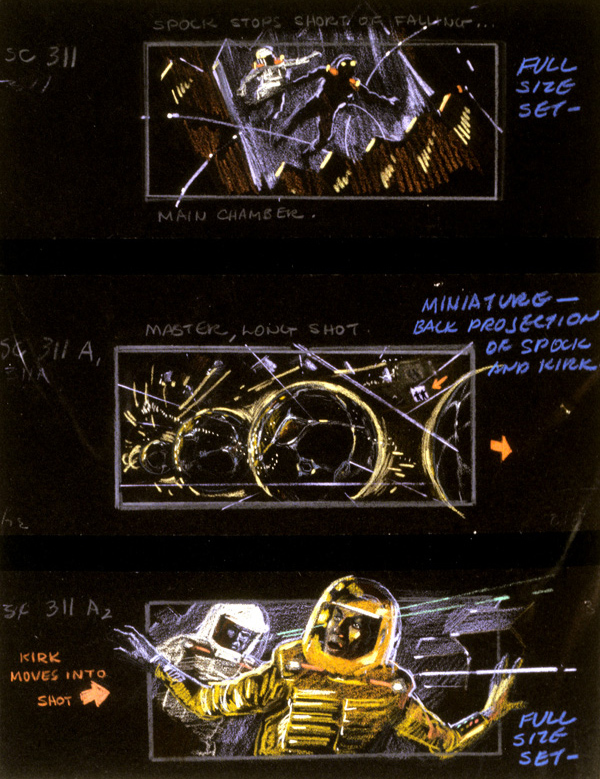Creating Spock’s Spacewalk

Two teams worked to create V’Ger for Star Trek: The Motion Picture: John Dykstra’s handled the exterior while Doug Trumbull’s dealt with the interior, including Spock’s spacewalk.
The spacewalk replaced the infamous memory wall sequence Abel studios had planned and filmed. Trumbull didn’t feel he could make that sequence work without spending a lot more money. The wire work had been awkward and unwieldy. There were problems with reflections in the spacesuit faceplates.
So Trumbull asked Director Robert Wise to let him shoot a new sequence, which he designed himself. The storyboards were done by Tom Cranham, with several artists, including David J. Negrón Sr. and Robert McCall, developing concepts. The spacesuits were completely redesigned and built at Apogee.





Trumbull’s new journey into V’Ger was much shorter and involved the actors in a minimal number of reshoots. Most of the sequence was shown from Spock’s point of view, so Leonard Nimoy wasn’t needed for much of the filming. The shots in his faceplate were accomplished by projecting still images onto a large plexiglas dome and then superimposing them onto the faceplate of his spacesuit.

A stuntman was called in for the shots where Spock’s face could not be seen. He was effectively treated like a model and mounted on a massive motion-control rig that could be attached to various points on the spacesuit and used to spin him around. He was then filmed in front of a blue screen.
The process proved so successful that Trumbull shot extra footage, and added a space-suited figure to the sequence where the Enterprise leaves drydock. Other shots for this sequence were done by filming a two-foot model of Spock that was built by Apogee. This model had arms and legs that could be moved by remote control.

The images Spock saw were mostly based on Robert T. McCall’s paintings and built by Greg Jein. Trumbull personally re-storyboarded the sequence when he saw the completed models, changing the order in which Spock passed through the various gateways for maximum effect. McCall spent three months or so working on concepts for the spacewalk. “I was creating other worlds — and especially other universes — that could be part of the trip that Spock takes,” he later remembered.
I knew what we were looking for; which was these entities that were hovering in space — huge, baby — that could have been a thousand miles across. The word maw was often used, there were the entranceways Spock would travel through to whole new universes.
The massive Ilia was a detailed plaster cast of Persis Khambatta, with light effects projected onto it.
Interestingly, this was almost the same approach Robert Abel and Associates had planned to take when Ilia merged with Decker in the end of the movie.






























